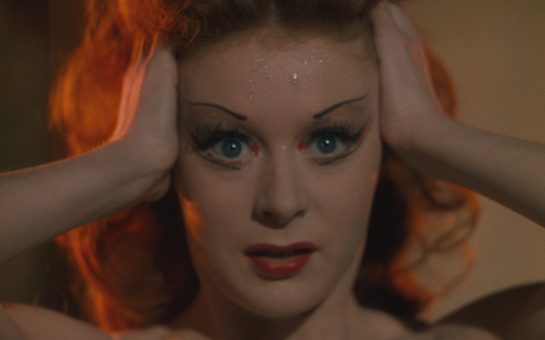As new legislation is passed freeing up product placement on British TV, do we need to prepare ourselves for an onlslaught of media manipulation?

By Laura Manning
Carrie Bradshaw is running to catch the last Staten Island Ferry back to Manhattan. As she steps onto the boat she loses a shoe in a Cinderella-esque moment. As the luxurious branded shoe falls into the deep blue sea of the ocean, the sassy single gal exclaims “Awe! I lost my Choo!!”
A blatant but rather cute marketing ploy, and one which reportedly lead to a coup for the Jimmy Choo stiletto in question, with stores selling out and the reintroduction of the line prior to the first Sex and the City movie.
I came to expect this type of marketing from the series, but as many began to get Carried away with their next helping of shoes, sex and shopping in SATC 2; a storm was brewing – with scores of accusations that the new film was pushing product placement to the outer limits of good taste.
The fashionistas are an unlikely catalyst in the war over product placement, but Carrie’s move to become a PC and step away from her loyal Macbook has created nearly as much publicity as the film itself.
But will this technique actually work? Will HP sell out of the featured notebook to devoted fans?
If marketers are intentionally trying to manipulate our decision-making ability to sway our buying habits, then surely product placement operates similarly to subliminal messages, which historically used hidden messages within films and music.
It simply leads us to beg the question: Are we being entertained or just hoodwinked?
Yes, the implantation of messages unknowingly into our subconscious mind is more controversial; but don’t both marketing ploys influence our behaviour, beliefs and attitudes?
And yet, subliminal messages are subject to strict legislation whilst product placement is now permissible on UK television by virtue of The Audiovisual Media Services (Product Placement) Regulations 2010 which came into force on April 16.
This legislation for ‘paid-for placement’ was strongly opposed by the trade body that represents the UK’s biggest brands, ISBA, due to the substantially higher costs for a service which used to be free. But with potential revenues to broadcasters of £25-35m after five years (according to Ofcom), are we really that staggered that it has gone ahead?
This marketing technique has of course plagued our screens for years, and although the sci-fi futuristic films on average have been most blameworthy; Sex and the City seem to have brought the debate to a whole new level.
Lecturer in Marketing at the University of Surrey, Rungpaka Amy Tiwsakul, has published research into managerial, ethical and consumer issues in the product placement field.
Her article in the International Journal of Advertising forms the only UK academic research cited by the ITV companies in the Ofcom consultation over product placement on UK television.
“[Product placement] has prompted many objections on ethical grounds and makes the UK an important site for research in the way in which young people engage with brands on TV,” said Professor Tiwsakul.
She explained bodies such as Alcohol Concern, the Children’s Food Campaign and The Church of England see product placement as a form of cultural manipulation, believing it might increase the current problems of obesity and drinking.
“These organisations are concerned that allowing the expansion of product placement on UK TV will deepen still further the extent to which the UK’s young people gain their values and standards from brands and consumer marketing,” Professor Tiwsakul added.
She plans to continue her research by exploring the experiences of TV product placement among young UK-raised people. She added that it will not only focus on narrow issues of attitude towards brand but also on broader issues of “how young people relate to the brands they see on TV and, in particular, how they assimilate these experiences into their own sense of social identity.”
But is it all so bad? Some see this marketing ploy as a way of deceiving the public whilst others believe it to be much better than incessant commercial breaks.
But where will the line be drawn? After all, we have previously witnessed some of the most blatant placement, with a parade of branded products becoming more aggressive and ‘in your face’ each time.
Some of the most shameful in movie history are I Robot and E.T., the latter using an M&M candy trail, probably aiming to take advantage of children’s naivety and inability to control their impulses.
Inevitably, this type of tactic has prompted arguments against food brand product placement in children’s shows; but can we really blame children’s health problems purely on a monkey-see, monkey-want basis?
Nevertheless, we shouldn’t underestimate pester power and the pure pleasurable enticement ads have to offer to young children.
So, what’s next? The new UK legislation permits and regulates the inclusions of, or reference to, a product, service or trade mark for a commercial purpose or in return for payment in programmes provided by television service providers in the UK.
However, it also provides that no programme containing product placement can be broadcast until the media regulator, Ofcom, has consulted the public and published its revised broadcasting code – expected in autumn 2010.
The 2010 Regulations have also put strict guidelines on some products and exempted children’s programmes, religious programmes, news and current affairs.
As for SATC, well, Carrie may not have actually embraced the HP TouchSmart tm2 notebook, but the mere suggestion of its place in the movie certainly put it to the forefront of our minds – but does this mean that you are going to jump in the car and drive to your nearest PC world? Well, I certainly won’t be.


